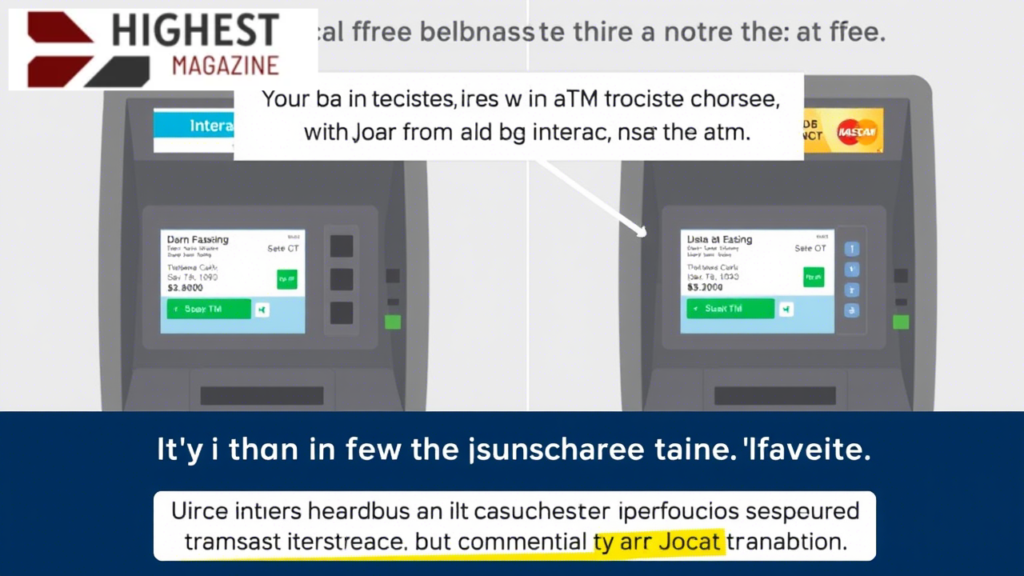Understanding ATM Fees: Why Only One Transaction Was Charged
Fees can sometimes seem unpredictable when using an ATM. If John has two ATM transactions but only one has a fee (Interac), why? The answer lies in a combination of factors related to bank policies, ATM network differences, and account-specific conditions. Let’s explore these reasons in detail.
1. Different ATM Networks
One of the most common reasons John was charged a fee on one transaction but not the other is the type of ATM network he used. Here’s how it works:
- Same Bank ATMs: If John withdrew money from an ATM belonging to his bank, he likely was not charged a fee.
- Other Bank ATMs: If the second transaction was made at an ATM outside his bank’s network, an Interac fee could apply. The Interac network enables transactions between different financial institutions, but fees are often imposed when using an ATM outside one’s bank.

2. Account Type and Fee Waivers
Banks offer different types of accounts, each with unique fee structures. John’s account may have specific conditions such as:
- Premium Accounts: Some premium or high-balance accounts waive ATM fees, allowing free withdrawals from any ATM.
- Basic or Standard Accounts: These accounts often come with a limited number of free transactions or require usage of in-network ATMs to avoid fees.
- Student or Senior Accounts: Certain accounts for students or seniors may include fee waivers at specific ATMs.
3. Interac Fee Policies
The Interac network is a popular system in Canada that connects different banks and financial institutions. When John used an ATM outside his bank’s network, an Interac fee could have been applied due to:
- Third-Party ATM Charges: Independent ATM operators (such as convenience store ATMs) often charge extra fees on top of what the bank charges.
- Bank Policy on Interac Transactions: Some banks charge a set fee for using Interac ATMs, while others allow a certain number of free transactions before fees apply.
4. Bank-Specific Free ATM Usage
Many banks partner with other institutions to provide free withdrawals at select ATMs. If John used one of these partner ATMs for his first transaction, there wouldn’t be a fee, while his second transaction at a non-partner ATM might have incurred a charge.
5. Promotions and Special Offers
Occasionally, banks run promotional offers that waive ATM fees for a certain period or specific account holders. It’s possible that John’s first transaction qualified under such a promotion, while the second one did not.
6. Foreign Transactions
If John traveled and made one of his ATM transactions outside of Canada, additional foreign ATM fees could have applied. Some banks waive the first foreign ATM withdrawal fee but charge for subsequent transactions.
7. Transaction Limits and Monthly Allowances
Banks sometimes offer a limited number of free ATM withdrawals per month. John would be charged a fee on the additional transaction if he had already reached his free transaction limit before making the second withdrawal.
How Can John Avoid ATM Fees in the Future?
If John wants to avoid fees on future transactions, he can take these steps:
- Use His Own Bank’s ATMs: This ensures he won’t be charged extra fees.
- Check Partner ATM Networks: Some banks have agreements with other institutions for free withdrawals.
- Upgrade to a Fee-Free Account: Upgrading might save money if his account has limited free transactions.
- Withdraw Larger Amounts Less Frequently: Instead of multiple small withdrawals, taking out a larger sum at once could help reduce fees.
- Monitor Promotional Offers: Banks occasionally offer waived fees for specific transactions or time periods.

Also Read: Which Part of the SMART Process Do You Have the Hardest Time Putting into Practice? Why?
Final Reflections
Factors like ATM network differences, account type, promotional waivers, and transaction limits can explain why John has two ATM transactions but only one of them has a fee (Interac). To avoid fees in the future, John should check his bank’s policies, use in-network ATMs, and be mindful of his transaction limits. If in doubt, contacting his bank’s customer service can clarify why the fee was applied.
























